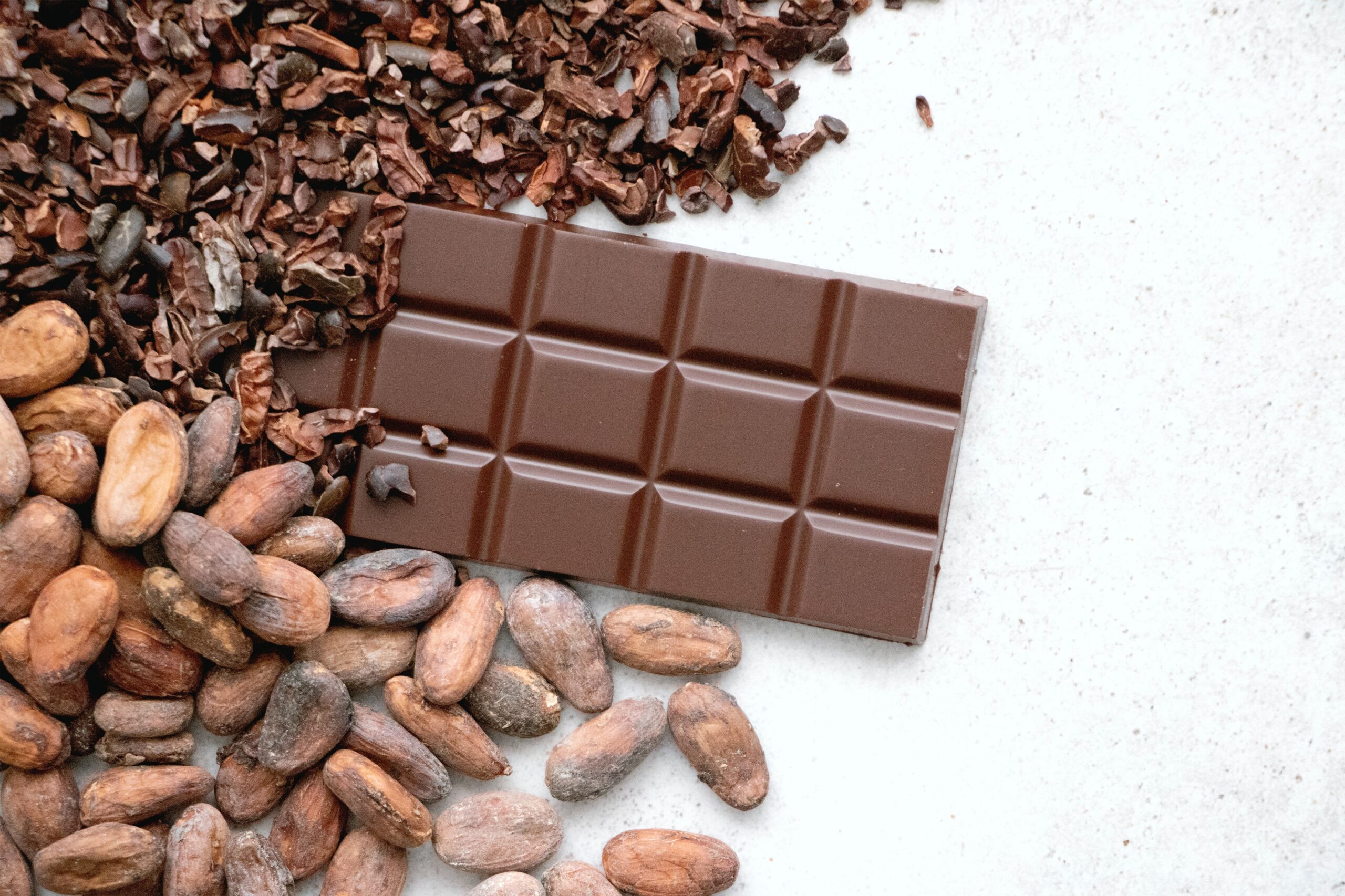As your taste buds must have told you: not all chocolate is good chocolate.
There are several considerations when it comes to chocolate and its potential health benefits:
Is it made with cocoa or cacao? Cocoa is roasted cacao bean powder, whereas cacao is a word often reserved for raw, unroasted cacao bean powder. Cocoa has a richer flavour than cacao, so you don’t need to use as much. Plus, cocoa is cheaper than cacao. The nutritional difference? Raw cacao is higher in cell-protecting antioxidants. Roasted cocoa had some of its antioxidants destroyed by heating. So, if you’re going to bake something chocolate-flavoured, use cocoa, not cacao. Save the cacao for use in cold smoothies, yogurt or Mexican mole sauce.
Check out this raw cacao chocolate bar company I discovered on a recent trip to Vancouver island. Also, consider making my Chocolate-Raspberry-Sea Salt Smoothie!
How much cocoa or cacao is in your chocolate bar? The higher the percentage of cocoa/cacao, the higher its capability to protect your cells from nasty free radicals. This may be why chocolate has so many purported health benefits. But sensitive individuals need to remember that more cocoa means more caffeine content. Be aware that at the same time, the higher the percentage of cocoa, the higher the content of heavy metals tends to be. For a comparison of the lead and cadmium levels found in popular chocolate brands and how they get there, head over to Consumer Reports to read their findings.
What’s the sugar content? It’s sugar that is responsible for transforming the reputation of cocoa from health food to junk food. The higher the percentage of cocoa/cacao, the lower the sugar content. How much cocoa do you think is in a KitKat? A Snickers bar? Herein lies the difference between a chocolate bar and a candy bar.
Is it milk chocolate, or dairy-free? Even if you’re not vegan, lactose-intolerant or allergic to milk, realize that milk is another ingredient that increases the total sugar content in your bar while reducing the amount of cocoa. If you really can’t get a taste for dark chocolate, look for chocolate bars that use oat, almond mylk as substitutes for cow’s milk. But be sure to look at the sugar content, too.
Does it contain soy? Soy lecithin is a very common emulsifier used in numerous processed foods. It’s therefore no surprise to me that more and more clients are reporting soy intolerance or allergy. If you are affected negatively by soy, choose a chocolate product that contains sunflower lecithin. That means saying goodbye to most big name brands like Lindt and Hershey. You deserve better.
My stance on cocoa/cacao
Final analysis: as a nutritionist, I believe there are mental and physical health benefits to eating a modest amount of chocolate. But like with all foods, varying your sources (i.e. brands, geographic origin, percent cocoa, etc.) is key for minimizing risks and maximizing these health benefits. And if you really want to feel good about your choice, choose fairly-traded cocoa products to support the farmers who labour for our love of chocolate. Here’s an example of a certified fair trade cocoa.
Of course, cocoa of any kind may not be suitable for your health condition. Please check in with your primary health care provider or nutritionist to discuss if cocoa is a good regular dietary inclusion for you.
